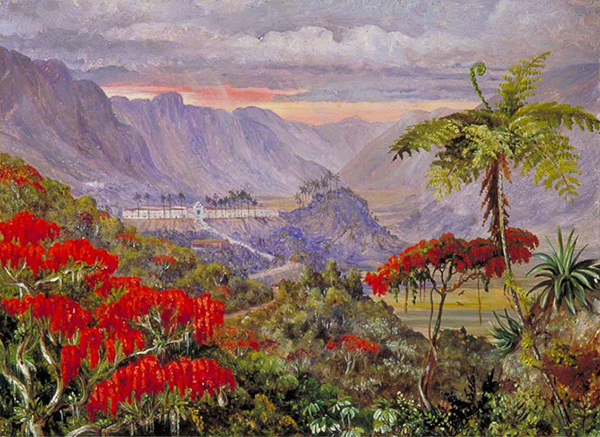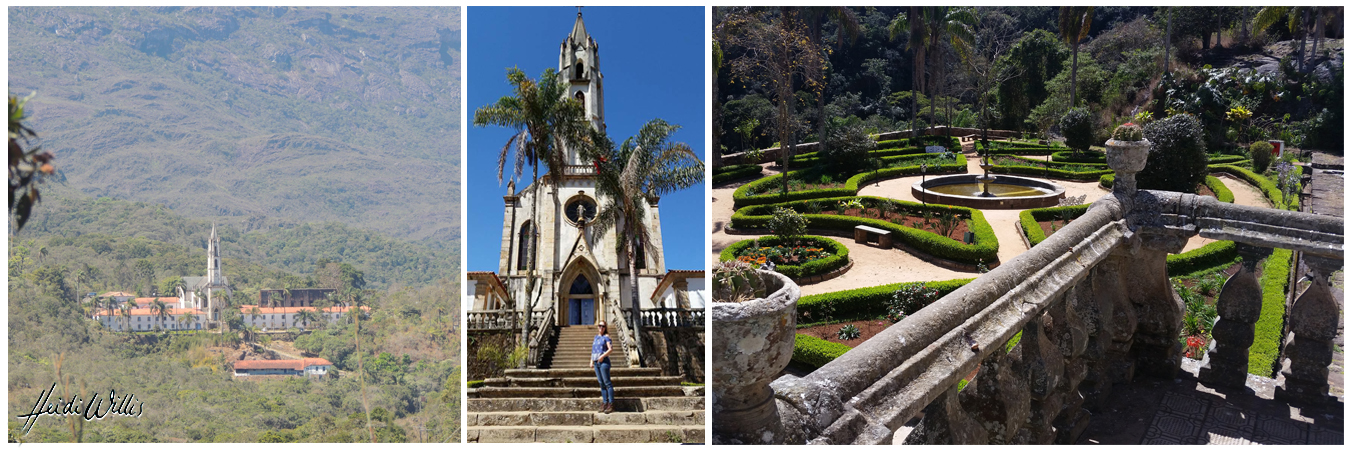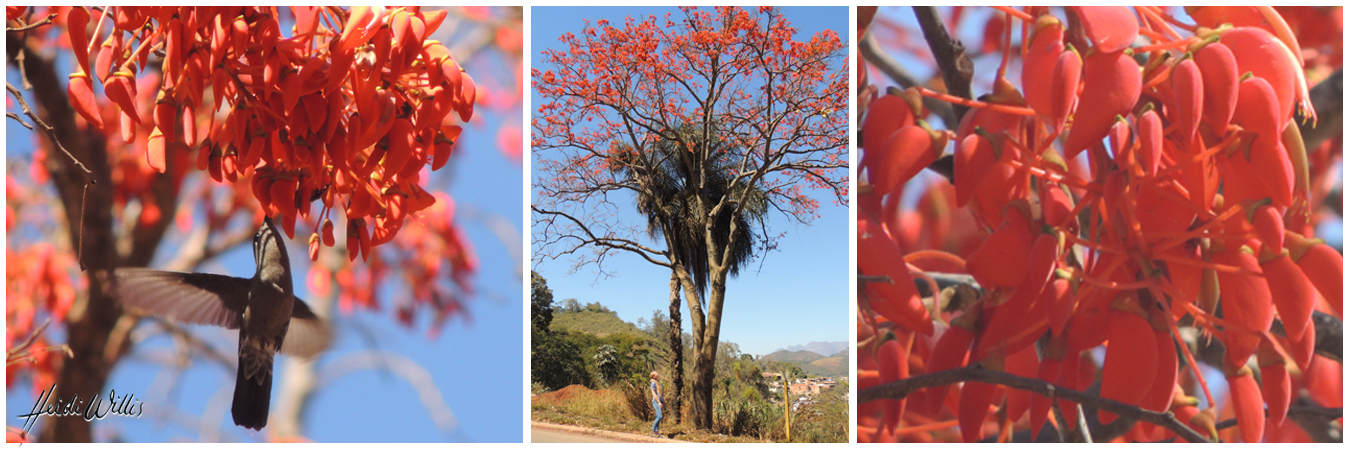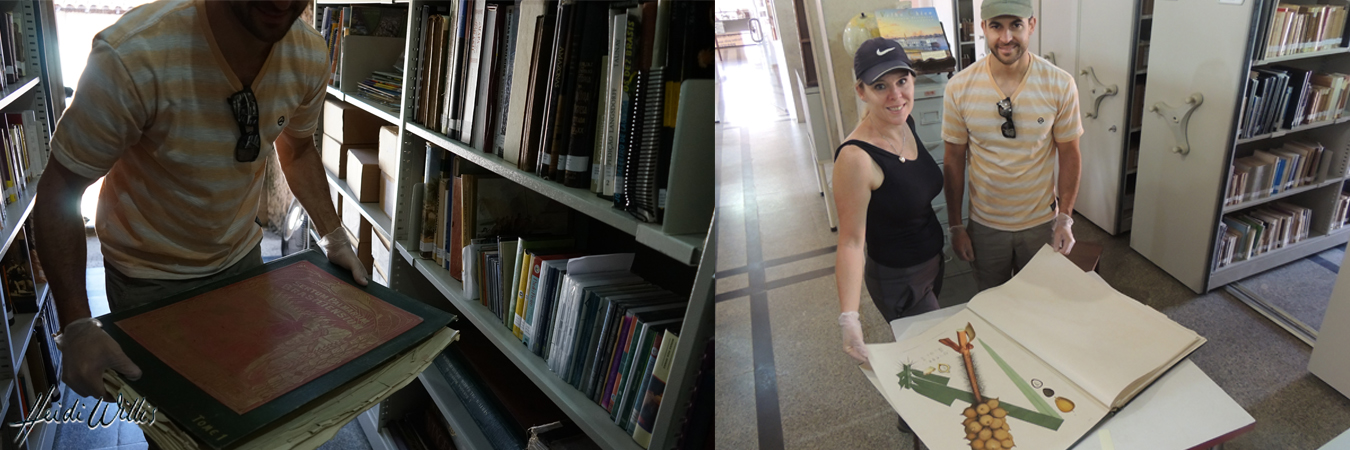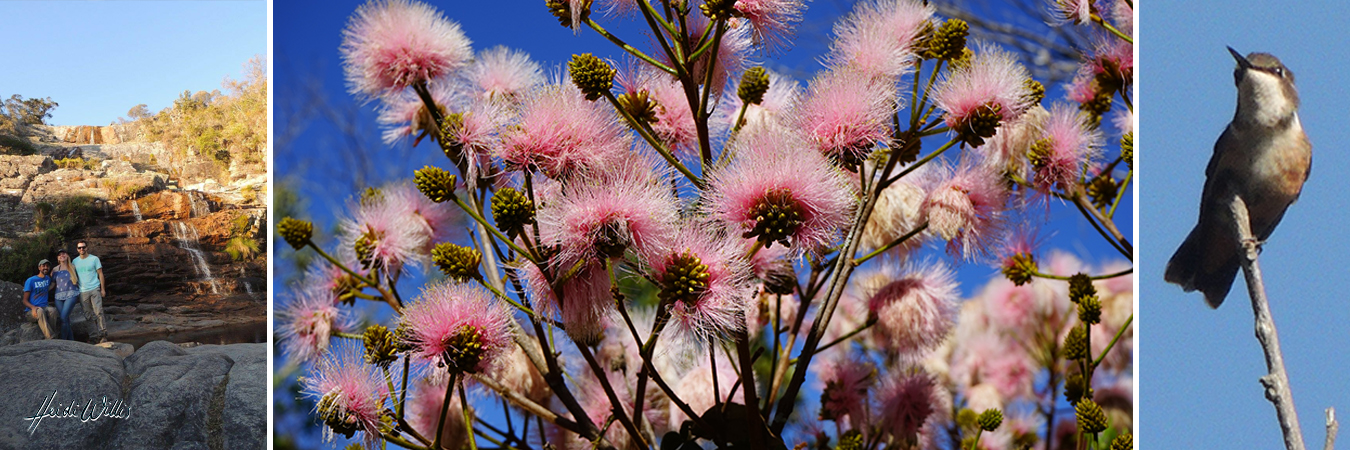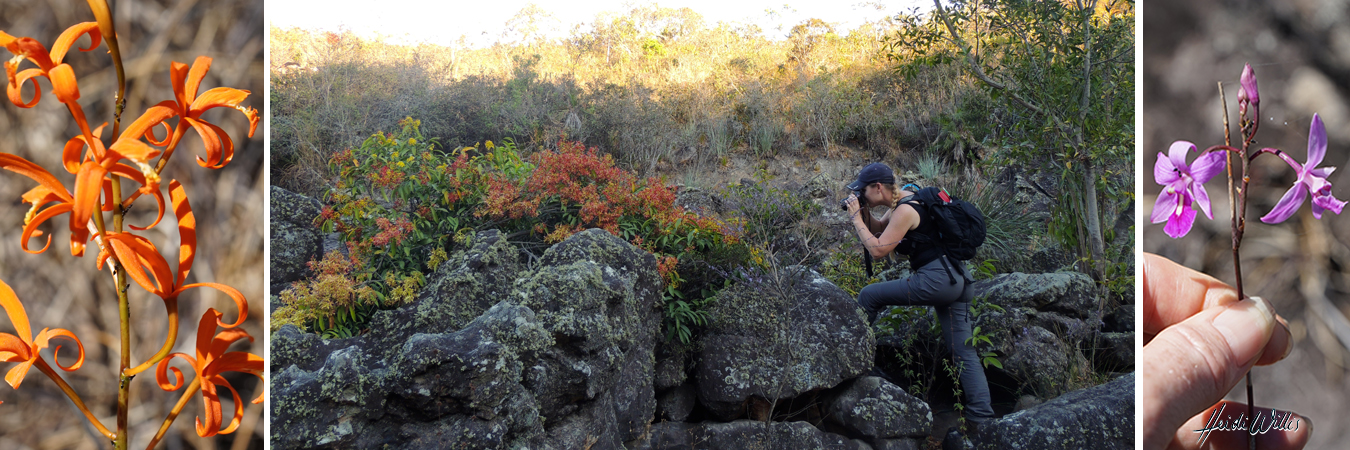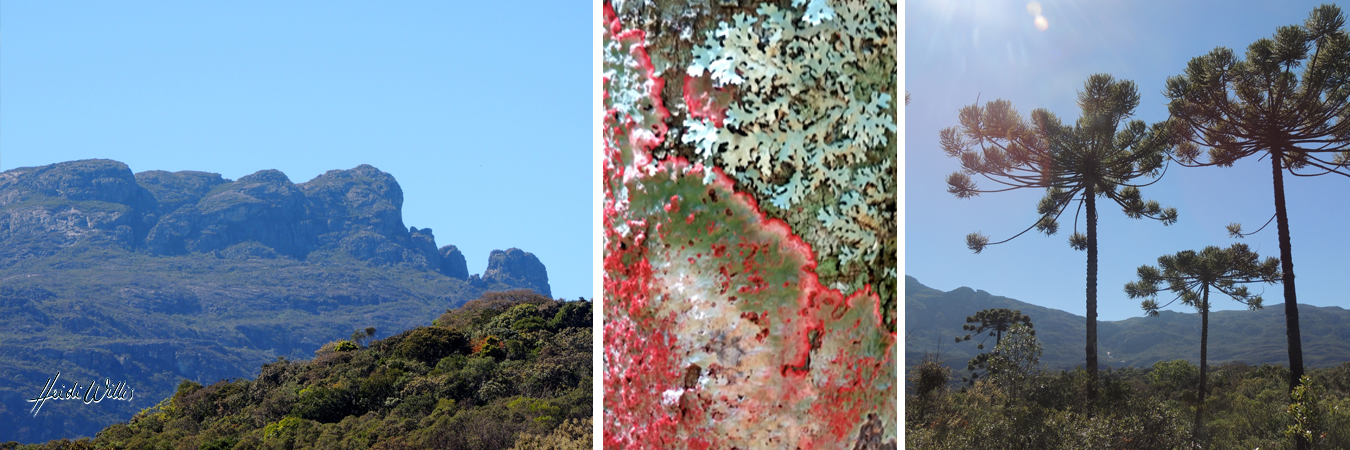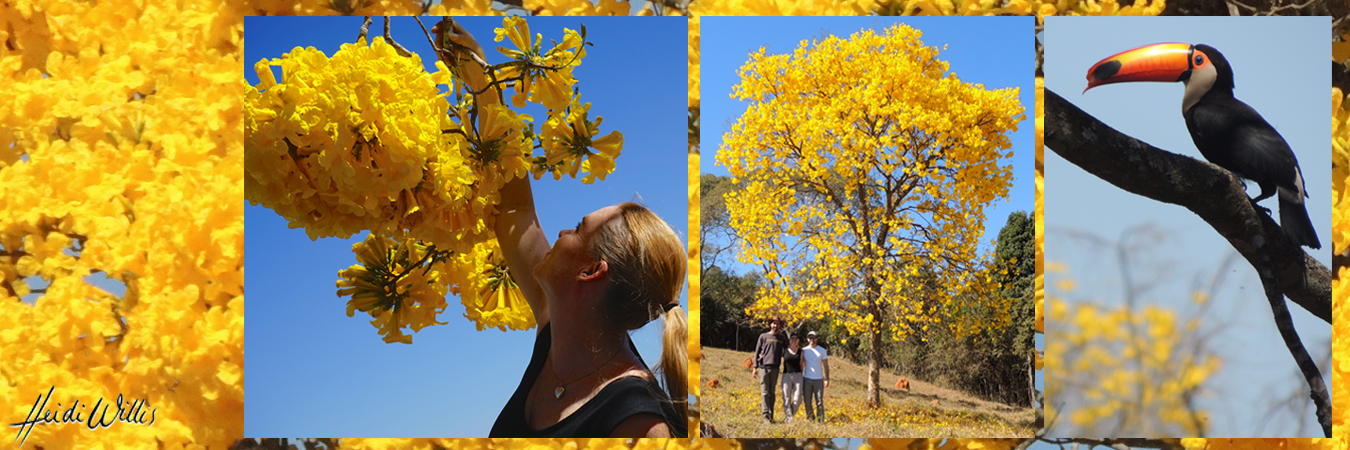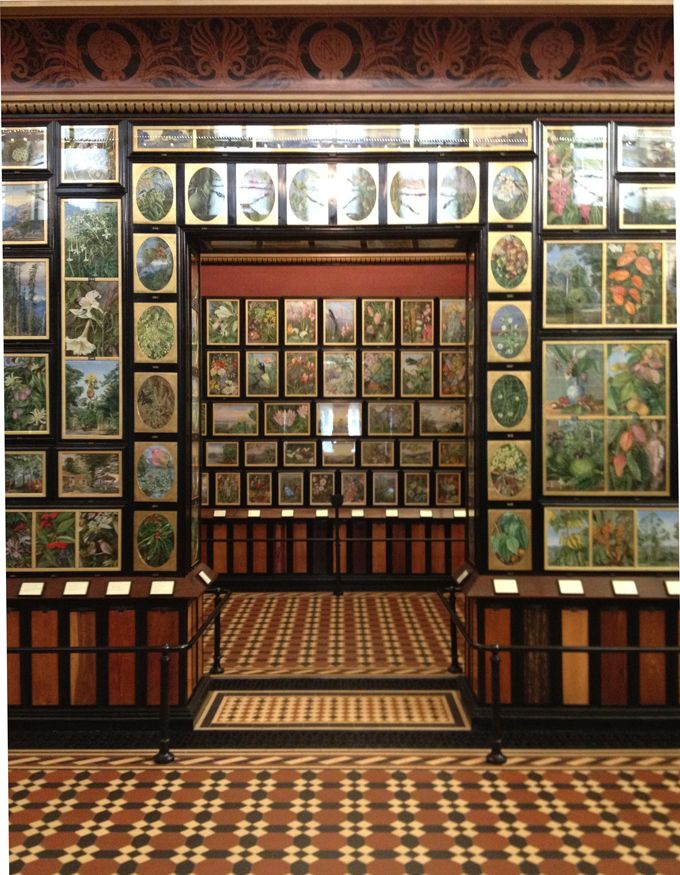‘’I am a very wild bird and like liberty.’ The only thing she could not do without was a supply of paper and her precious oils’
(wiki) ‘Marianne North (24 October 1830 – 30 August 1890) was a prolific English Victorian biologist and botanical artist, notable for her plant and landscape paintings, her extensive foreign travels, her writings, her plant discoveries and the creation of her gallery at the Royal Botanic Gardens, Kew’
I should have known, but i did not…
Its a funny thing. As a botanical artist having come thus far, I really should have known who Marianne North was, but I didnt have a clue. Ive never walked in the footsteps of another, nor been one to seek inspiration of those who have come before me, always keeping to myself and my own path which has served me well. Them there came a day, standing with my dear friends Kelen and Lucas in Brazil overlooking this marvellous, magical place – in fact this very view – when Kelen told me who Marianne was. It wasnt until then I started to learn not only of her work, but her travels and further still, the incredibly similar paths we had walked in our lives and adventure, perhaps now, standing on the very same ground she once had. Kelen smiled at me and said, perhaps you are her reincarnation! We giggled like children but the thought has crossed my mind more than once as ive felt the organic alignment. A kindred spirit i am sure!
How amazing to see this painting, standing in the identical place, looking over the Caraća view of the monastery, having scoured the Brazilian landscape for weeks in search of the same flaming red flowering tree captured in this painting of hers. I read of her life briefly there and thought of her life and work many times during my travels. It has brought me new energy, enthusiasm and passion for my pursuits here in Brazil, urged on by the remarkable women that have come before me in the same intention. I felt here, in this place so incredibly fulfilled and happy. In this thought i want to share a little about Mariannes life and work. Someday I shall make it to Kew to see it for myself. For now, I shall walk this earth with the freshest eyes of my own, forever influenced in my heart, mind, souls, spirit and work by its history and magic.
A wonderful article written by By Kathryn Hughes
Miss Marianne North was adamant. She wanted her new art gallery, nestled in a far corner of Kew Gardens, to serve refreshments to weary visitors. But Sir Joseph Hooker, the director of the Royal Botanic Gardens, was having none of it. Kew was not a pleasure park for day-trippers, but a place of serious study for scholars of the world’s rarest flora. And scholars did not need to stop for tea. Yet, true to form, it was the redoubtable Miss North, by now in her fifties, who had the last word. When the Marianne North Gallery finally opened in 1882 there were, as Hooker decreed, no refreshments. However, sharp-eyed visitors noticed that above the doors to the elegant building Miss North had wryly-painted pictures of the tea and coffee plant.
This quiet determination was typical of the woman who became the pre-eminent botanical artist of the late Victorian period. Travelling mostly alone (she found companions tiresome), North powered her way through the world’s most inhospitable terrains in search of rare and beautiful plants. But, unlike most other (male) naturalists of the day, she didn’t dig up the specimens and carry them home. Instead, she whipped out the oil paints she always carried with her and proceeded to capture their exotic beauty on paper. The result, closely packed on to the walls of the gallery that bears her name, provides a unique snapshot of the world’s natural habitat more than 100 years ago. Many of the species North painted have since disappeared before what Hooker himself referred to as ‘the axe and the forest fire, the plough and the flock’. She was, quite literally, documenting a vanishing world.
According to Laura Ponsonby, the author of Marianne North at Kew Gardens, what made North’s achievement all the more remarkable was the fact that she had little formal artistic training. Although she had taken a few drawing lessons as a girl, her real passion was for music, particularly singing. Still, as the eldest daughter of the well-to-do MP for Hastings, a life on the stage or in the concert hall was hardly an option. So North dutifully set aside her natural abilities and settled to a life of tepid conformity, dividing her time between her father’s constituency and the family home in London. While her sisters made good marriages, she viewed the idea with abhorrence, declaring the institution ‘a terrible experiment’ that turned women into ‘a sort of upper servant’. Instead she preferred the role of confidante and companion to her widowed father, whose passion for travel and botany she shared.
The turning-point in North’s life came in 1867. Taking her first lessons in oil painting, she found the experience irresistible, describing it as ‘a vice like dram-drinking, almost impossible to leave off once it gets possession of one’. The death of her father just a few years later left her independently wealthy and finally able to realise her growing ambition to ‘paint the peculiar vegetation’ of other lands. She was 40, and a free agent at last.
North’s first adventure began with a trip to America. Landing in Boston, she was overcome at the sight of so many new plants – scarlet lobelias, white orchids and ferns, not to mention the green humming-birds that darted between them. However, it was not until she reached Jamaica that she settled into a pattern of steady, regular painting. Renting a house in the old deserted Botanic Gardens, she was ‘in a state of ecstasy’ at the bananas, palms, orchids and passion flowers that she could see from her veranda. Rising at daybreak, she painted furiously in the open air until midday. The rainy afternoons were spent working indoors, and in the evening she once again went out to explore, returning home after dark. It was a far cry from the life of a maiden lady from Hastings.
Over the next 13 years North travelled to Brazil, Tenerife, Japan, Singapore, Borneo, Sri Lanka, India and South Africa. At Darwin’s suggestion she took in Australia, New Zealand and Tasmania, too. Although her family connections meant that she often arrived bearing letters of introduction to ambassadors, governors and ministers, she much preferred to make her own way across the strange and inhospitable terrains. Conventional society bored her, and the thought of having to appear at steamy formal dinners in clammy evening dress was nothing less than torture. Instead she struck out alone, travelling on rickety transport and staying in primitive accommodation. If someone insisted on providing her with a companion, she usually managed to give them the slip after a couple of days, explaining, ‘I am a very wild bird and like liberty.’ The only thing she could not do without was a supply of paper and her precious oils.
The fact that North chose to paint in oils, rather than the more ladylike watercolours, accounts for the fact that her work has lasted so well. While the humid conditions in which she worked would have played havoc with water-soluble pigment, the oils have remained as strong and bright as ever. A restoration projection currently under way at Kew is bringing North’s paintings back to the peak of perfection. And what it has revealed is truly extraordinary. Using a palette of almost hallucinatory colours, North was able to capture the singing reds, blues and yellows of tropical vegetation that had rarely been seen in Britain. Working in a time before colour photography, she provided both the scientists at Kew and the general public with a tantalising record of the botanical wonders that lay on the other side of the world.
What made North’s botanical art unique – and somewhat controversial – was that she didn’t simply paint plants in isolation. Not for her the single bud or flower or leaf set against a plain white background. Instead, her pictures attempt to record a whole ecosystem. Take one of her most celebrated pieces, showing the Scadoxus multiflorus, a gloriously pink and gold ball of a plant from Brazil. North’s painting shows it growing on desiccated soil in the shade of a rocky outcrop. In the foreground she includes a brightly striped coiled snake and a fat spider, which appears to have fastened its sticky thread to the scadoxus. The result is not simply a stunning visual composition, but a detailed record of the way the plant interacts with its immediate environment.
But it was not just the boffins at Kew who marvelled at the extraordinary dexterity of North’s work. The public were increasingly intrigued by newspaper stories of the indomitable lady who brought back images of exotic plants from the four corners of the world. Many flocked to a London exhibition of her work in 1879. She was overwhelmed by the attention, but an idea began to form in her mind. Later that year, while waiting for a train at Shrewsbury station, she wrote to Sir Joseph Hooker asking whether he would accept her paintings as a gift to Kew. She was, she explained, prepared to build a gallery at her own expense in which to show them to their best advantage.
To North’s delight Hooker said yes – although he turned down her suggestion that ‘tea or coffee and biscuits (nothing else)’ should be provided in the new gallery. With customary determination, and notwithstanding the fact that her health was beginning to fail following years of punishing travel, North set about designing the gallery that would bear her name. She commissioned the celebrated architect James Fergusson to build a space that resembled a Greek temple, with high windows, a decision that accounts for the fact that the paintings have been preserved from sun damage. The lower parts of the gallery’s walls were to be clad in no fewer than 246 different types of wood brought back by North from her travels. What’s more, she herself would paint the surrounds to the doors, including those sly references to the forbidden tea and coffee.
When the gallery was finally finished in 1882, 832 of North’s botanical paintings were hung on its walls in a tightly packed formation. The overall effect, according to one contemporary, was rather like a gigantic botanical postage-stamp album. The pictures were grouped according to their place of origin, with all paintings from one country hung together. In effect, visitors were being offered a dizzying tour of the natural world. Starting in America, they travelled westwards to Japan and from there to Borneo, India and finally to Jamaica and Chile. According to the terms of North’s bequest, this unique – some would say eccentric – way of presenting her pictures must never be changed.
As the 20th century progressed, the Marianne North Gallery became increasingly overlooked by visitors to Kew. Tucked away off the beaten track, it was easy to pass the little Greek temple unaware that it housed the nation’s most important collection of botanical art. Perhaps, too, as the art and science of photography developed Marianne North’s patient likenesses of exotic plants started to seem less startling. More recently, though, her work has been undergoing a reassessment and the full extent of her extraordinary achievements is being celebrated once more. A grant from the Heritage Lottery Fund has helped pay for a complete overhaul of the gallery, while each painting has been taken down and lovingly cleaned. The Marianne North Gallery will open again in the autumn this year, to coincide with the Royal Botanic Gardens’ 250-year celebrations. And this time the chances are that footsore visitors to Kew will be able to count on getting tea, coffee, biscuits and much more besides’
Marianne Norths Gallery, if ever i had one, its on my bucket list
Another remarkable, inspiring, bold woman, a wonderful artist, an intrepid adventurer, a loner, an inspiring life and precious legacy of a life lived so fully. This is a woman after my own heart! Brazil. Forever in my heart…

